Apr
07
2011
When it comes to unethical advertising, McDonald’s happens to top the list in this category. As we know, McDonald’s attracts many young kids with their Happy Meal option where a toy is received along with a meal. It has been a great way for the company to entice children to eat their food and influence parents to satisfy their children’s happiness by buying the Happy Meal to get the toy, even if the meal is unhealthy. This has in fact become such a controversial tactic that there has even been a case where a mother has sued a Sacramento McDonald’s because she claims it, “manipulated her children into begging to eat at McDonald’s.”
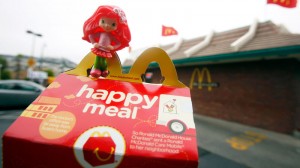
McDonald's Happy Meal (A Meal and A Toy)
However as my marketing professor, Elaine, explained ethics is not a black and white issue in marketing but rather a gray one. Can we say that this kind of advertising McDonald’s is doing is unethical or can we just say that parents need to learn to not give in to their children’s wants? With many advertisements aimed at children because they are not sensible enough at that age to realize what is right and wrong, some people say it is just the way it goes in marketing. While others think that companies should be able to advertise their products freely, but still stick to some type of guidelines in order to keep it ethical. In my opinion, I think McDonald’s is just trying to create a sustainable competitive advantage and is willing to advertise and promote their Happy Meal to vulnerable children to sell the product which is the ultimate goal. While I’m not saying this is completely right, I don’t know if I would say it is completely unethical either.
Mar
24
2011
After coming across Victor Kong’s blog on creative outdoor advertising titled, “SURPRISE!,” it influenced me to go see what other creative outdoor advertisements were out there. Since learning about this topic in our marketing class on Tuesday, I became interested in seeing what kind of advertisements like this had been made. With so many traditional billboard or plain ads on bus stops, marketers need to be able to capture people’s attentions and creative outdoor advertising is definitely one way to do this.

I agree with Victor that while these advertisements are more comical than informative, it is the element of surprise that captures people’s attentions. Having said that, capturing people’s attention’s is also extremely important as it is the awareness part of the AIDA model. In order for consumer’s to gather information and interest in a product, they first must be aware of it.
One important thing to remember when advertising outdoors though is that location plays a huge part in the success of the advertisement. No matter how creative or good the outdoor advertisement is, it needs to be in the right location to target or attract the right market. Creative outdoor advertising is significant because it presents immeasurable options for advertisers to connect with their audience. It also serves as a way for companies to effectively differentiate themselves from its competitors and attract customers. After searching online for some, below are some of the ones that really stuck out for me.
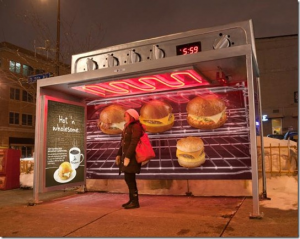
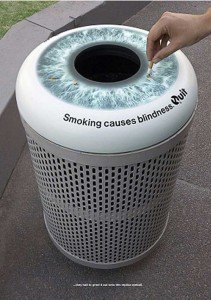
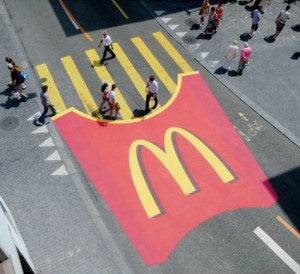



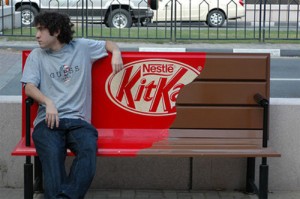
Mar
17
2011
Ever thought Costco would be selling wedding dresses? Well, now they are. The discount wholesale club is the latest major retailer to launch a bridal collection and Costco says, “It’s making the all-important dress selection process more convenient, casual, and affordable.” The wedding dresses will be sold at prices ranging anywhere from $699-$1399.

“In a world where the average wedding dress costs $26,984 in the U.S, brides on average spend around $1,099.” While the wedding dress market has always been associated with high prices, Costco came up with the idea of creating a line of wedding dresses that cater to a different market – people who want cheaper prices, the convenience of picking a dress out easily, and just want the dress to be simple.
Recently, other retailers have begun to include wedding dresses in their stores. Urban Outfitters launched a bridal line called BHLDN last month. Even highly respected fashion designers like Vera Wang are starting to think more mainstream by developing a line of more affordable wedding dresses at David’s Bridal.
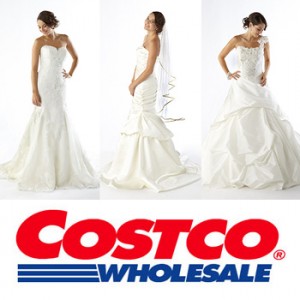
The question is will this bridal line at Costco be successful? Taking a look at their market, customers of Costco tend to go to the store for lower prices on food products, technological products, and household items. They do carry a stock of clothing but including wedding dresses might be going to another extreme. Also, as we learned in my marketing class, customers tend to base the quality of products on the prices. If the gowns are priced cheaply, customers may think the gown is of bad quality. Sure, people want more affordable, convenient, and casual wedding dresses, but I’m not so sure this will be a profitable line for Costco to sell.
Mar
10
2011
Yesterday, as I was watching a show on TV, a commercial came on during the break comparing the continuously competitive soft drinks in the market, Coca-Cola and Pepsi. This commercial featured Coca-Cola’s, Coke Zero drink and Pepsi’s, Pepsi Max drink. Immediately, the commercial got me thinking about the importance of brand positioning.
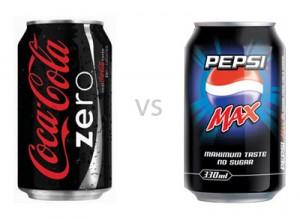
Since both drinks promise zero calories but still great taste, both companies needed to create a strong positioning statement and advertisement tagline in order to be #1 in their segment and category. Below are Coca-Cola Zero’s advertising taglines.
Coca-Cola Zero’s Taglines:
1) “Coca-Cola Zero, the flavour nobody expected.”
2) “The same taste as always, zero sugar.”
To be honest, when I first saw the names of both products, I thought that Coca-Cola Zero had a better name as it made it more clear that the drink was healthier with zero calories whereas Pepsi Max sounded like it had more or the maximum calories and was a little more unclear to me. However, my opinion changed when I heard Pepsi Max’s taglines below. I thought Pepsi did a good job entering the market by trying to say they are better than a zero and ultimately taking a stab at Coca-Cola.
Pepsi Max’s Tagline:
1) “Maximum Taste. Zero Calories.”
2) “Too much taste to be called a zero.”

Overall, this product competition between these two very similar drinks will always continue to go on. It’s just a matter of each company currently updating their positioning statements and advertising taglines to have an edge over the other. Which company do you think is doing a better job of this?
Mar
03
2011
Starting Monday March 7th 2011, Tim Hortons will begin serving smoothies in its stores in Canada. The company has already introduced the product in the States but has been testing the product in Canada for five years. According to Dave McKay, the marketing director for beverages at Tim Hortons, “Canadians are snacking more and they are looking for healthier snacks, so it’s a big business opportunity to launch smoothies in Canada” (Canadian Press, 2011).
As soon as I read this article, it immediately got me thinking about Tim Horton’s STP outline. Through research about lifestyle trends towards healthy alternatives and what its competitors were offering, Tim Hortons realized that they could segment their market into those who want regular coffee beverages and those who want healthy drinks like smoothies.
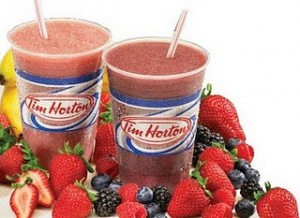
By segmenting the market into these two groups, Tim Hortons can target those who want to have a healthy drink. The Tim Horton’s 10-ounce smoothie will cost $1.99 and have 130 calories, zero grams of fat, and a full serving of fruit. In a fast-paced generation where convenience is valued, this product will also benefit those customers who don’t have time to eat their portion of fruits for the day.
As a positioning statement for Tim Hortons, the company can claim that they are a reasonably priced coffeehouse company that also provides healthy alternatives. This gives the company a jump on some of its competitors and allows them to secure another portion of the market besides coffee beverages.
Feb
18
2011
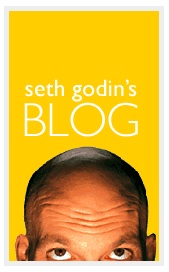
After reading Seth Godin’s blog, When was the last time you bought a tie, it got me thinking about market segmentation. In Seth’s blog, he talks about the difficulties of activating a segment of the market that isn’t looking as opposed to the easiness of targeting a market that “can’t wait for your arrival” (Godin, 2011). He argues that while most marketers think it is important to expand their target market, it is actually most beneficial to create products matching what the market is looking for, seeking out those people, and ignoring the rest.

- Failed Brand Extension: Colgate Kitchen Entrees
I thought this blog was particular interesting because we just talked about this in my marketing class. While brands can extend their name to an unrelated product category, it is not successful all the time. In addition to the failed brand extensions shown in class, I was curious to see what other products came up. After researching some online, I came across some very bizarre brand extensions on this website titled, Top 25 Biggest Flops of All Time. One that stood out to me was Colgate Kitchen Entrees which was a range of food products that Colgate decided to create. Apparently the idea was that consumers would eat their Colgate meal and then brush their teeth with the toothpaste. However, when a person hears the Colgate brand name, it doesn’t necessarily activate their taste buds. Going back to Seth Godin’s point, why create a new product to extend your brand if you already have a successful market with your existing product?
Feb
08
2011
As a Blackberry smartphone user and client of RBC bank, I was excited when I received an email about a month ago saying the free RBC mobile banking application which includes a full range of banking services was now available to download.
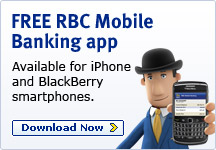
As part of RBC’s SWOT analysis of their company, they realized there was an opportunity to create a mobile banking application in order to cater to customers that need easy convenience to the bank. Before they realized there was an opportunity for this service, RBC did a situation analysis on their market and conducted research polls in order to gather information. According to the RBC website, they found that 44 percent of people were interested in a mobile banking option with Canadians wanting “the ability to check account balances (34 per cent), pay bills (32 per cent), view transaction history (28 per cent) and transfer funds between accounts (26 per cent).” RBC also realized the fact that a majority of their clients are business people with smartphones that need bank services on-the-go or an easy way to make payments.
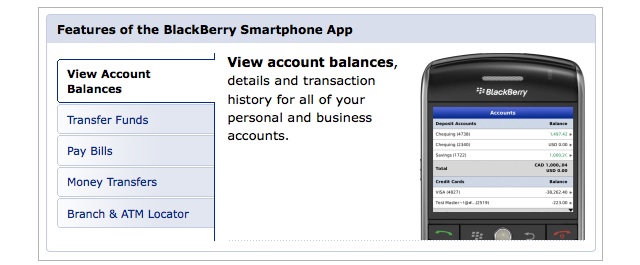
However, 24 percent of people cited they would be worried about security and privacy concerns with the mobile service. In order to prevent this threat, RBC offered to provide the same safety and security as their online banking service and “if an unauthorized transaction is conducted through an RBC mobile banking service, clients will be reimbursed for any resulting losses to those accounts.”
With the recent release of this application in December 2010, I have since seen many advertisements on busses, bus stops, billboards, and malls. As part of RBC’s strategy, they are trying to attract new customers who want a service like this but their bank doesn’t provide it.
Feb
03
2011
After coming across Mandy Chow’s blog, iPhone 4 Face Time, it got me thinking about the marketing strategy behind iPhone 4. When the product came out, there was plenty of hype surrounding it but I never actually thought about the strategies Apple used to market the product until now. As Mandy mentioned in her blog, the video that she posted does indeed accomplish Maslow’s Hierarchy of Needs.
The video that Mandy posted prompted me to search up other iPhone 4 videos on Youtube and I came across this one which I thought was interesting. 
After watching it, I started thinking about iPhone 4’s marketing strategy. As I learned in my marketing class, a marketing strategy consists of a firm’s target market, a related marketing mix, and a sustainable competitive advantage.
I think the video shows that their target market is anybody of any age. They even branched out to the older generations by showing an older couple watch their granddaughter graduate with FaceTiming.
As for the product, they created value by promoting the FaceTiming service which allows people to see each other anywhere in the world. In return, they captured value through people’s purchases of the phone and hopefully happiness and loyalty to the company. For delivery of value, iPhone 4 can be easily bought at most phone stores in malls or be sent by mail. Lastly for promotion, iPhone 4 communicated its new FaceTiming Service through numerous videos and advertisements.
IPhone 4’s sustainable competitive advantage is through FaceTiming. No other phone company can bring people together by allowing them to talk face-to-face through their phone. Iphone 4 was smart to realize that they needed to diversify themselves in the market with something different from other smartphones and this was their solution.
Jan
27
2011
Most people have probably heard of the name Dolce and Gabbana before but lately this company has come under controversy for their advertising posters and campaigns. Dolce and Gabbana are two Italian designers that have created a fashion empire and have used advertisement campaigns to promote their brand. In the fashion world, it is not uncommon to “push the envelope” but some think their advertisements have gone too far. 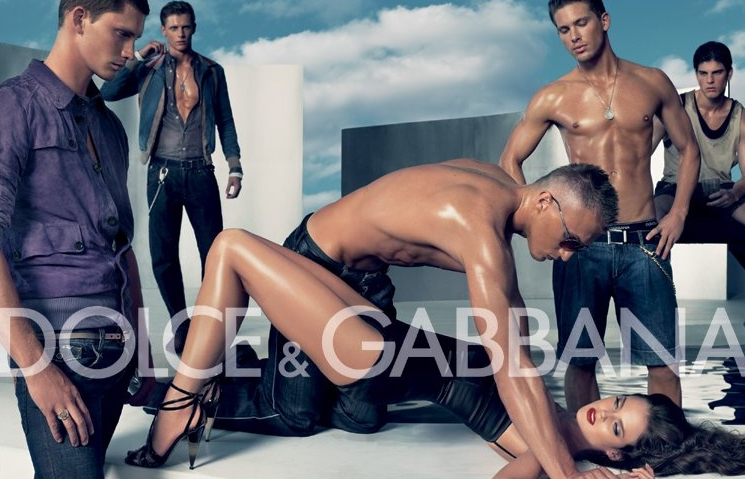
According to Sarah Stefanson, a blogger on the Models and Moguls website, critics have interpreted some of the advertisements as “depictions of gang rape, violence and even necrophilia.” Perhaps the most controversial ad of all though is one of a man holding down a women by the wrists while other men are standing around, signifying gang rape. While Dolce and Gabbana defended the ad saying it was just artistic expression and had nothing to do with real life, they eventually felt pressure from the government and the public to pull it.
However, while there are many critics, Dolce and Gabbana do have some supporters. Kevin O’Malley, the vice president and publisher of Esquire magazine that ran the gang rape ad at the time, defended the company’s right to artistic expression. With famous supporters like Madonna, Angelina Jolie, and Kylie Minogue, the brand clearly doesn’t need all the controversy. The question is, does it help though? Also, do you think the advertisements are simply an expression of their art or have they gone too far?
Jan
11
2011
Recently launched in North America in November 2010, the Kinect for Xbox 360 was released as a gaming system with no controller. With a peripheral sensory device that reacts to gestures and spoken commands, the Kinect serves as an interactive way to play electronic games as well as connect with friends and family.
This product was created so Xbox could keep up with its competitors, Wii and PlayStation 3 which also consist of sensory games but with controllers. The Kinect was marketed to people of all ages who were not only seeking entertainment but fitness activities. Without the hassle and technological problems of dealing with a controller, the Kinect may also entice the older generations or young children to purchase the product as it is easier to use. At a time of New Year`s fitness resolutions, it was a smart idea to market the idea around Christmas time.

According to the Game Spot website, Kinect bought in 2.5 million dollars by December 2010 beating the Nintendo Wii and Play Station 3. Although it has been a tough year for the gaming industry, Kinect has done well largely because of its marketing strategy. Kinect has reportedly spent $500 million on its marketing. Robert Matthews, Xbox`s general manager of global marketing communications said, “Kinect is the largest, most integrated marketing initiative in Xbox history, bigger than [the Xbox 360’s] launch.” Not only did they market to television, print media, and food and drink but they partnered with Pepsi, Burger King, and Kellogg`s to advertise the product.
Although it is a neat concept, I think the novelty of this new technology will wear off. The games which you can play with the Kinect are more suited towards little kids and are family oriented. Most of the gaming population are teens and men who will probably opt for games with more action that they can`t play on the Kinect. With decent sales though, I guess only time will tell.






















